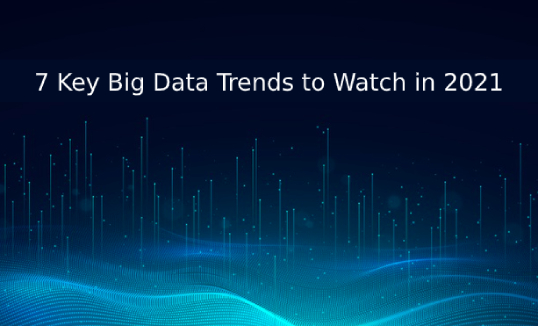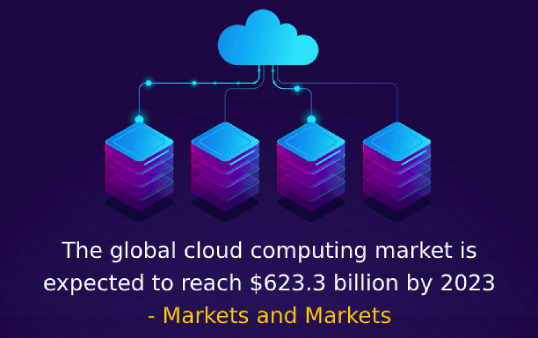
As everyone knows, 2020 didn’t quite turn out to be the year we had all expected. The pandemic threw a massive spanner in the works of most businesses, which suffered in countless ways, and IT departments were forced to take the brunt of it. However, in general, they stood up pretty well. In 2020, more people had to work from home, conferences were canceled or went online, and cloud computing took an expanded corporate role, more out of necessity than design.
The promise of Big Data, which has proven so elusive over these past few years, started to materialize in 2020. If this global outbreak proved anything, it was that human beings can be as productive working from home as they can be in an office. Initially, Big Data came with the heady promise of real-time actionable intelligence, but only now are those promises coming to fruition. Actionable data, the Hybrid Cloud, Cloud Automation, and Immersive Experiences, along with the following other trends are set to radically alter the tech landscape in 2021.
1. Actionable Data
Although “Actionable data” is a term that data integration, business intelligence, customer experience, and analytics vendors have been pushing for at least a decade now, 2021 might be the first year Big Data’s potential does become actionable. A lot of the value in data diminishes the older it gets, so being able to utilize it closer to creation makes it much more valuable.
Improvements in data collection, data governance, data integration, data visualization, and analytical modeling have made data much more useful and therefore much more actionable. Real-time processing, the IoT, the cloud, in-memory computing, edge computing, and digital channels that connect with customers instantaneously have all combined to make data not just more actionable but much more insightful and useful.
2. Hybrid cloud
Over the past decade, the cloud has been recognized as a transformational technology, but many companies don’t feel comfortable putting some of their data on the cloud for a multitude of reasons, including security, privacy, poor latency, amongst others. This is where the Hybrid Cloud comes in. According to a report, the “hybrid cloud is a solution that combines a private cloud with one or more public cloud services, with proprietary software enabling communication between each distinct service. A hybrid cloud strategy provides businesses with greater flexibility by moving workloads between cloud solutions as needs and costs fluctuate.”
The Hybrid cloud connects at least one private cloud with one public cloud. While a private cloud is an internal network available to only a select group of users, a public cloud is a computing service offered by third-party vendors like Amazon, Microsoft, Alibaba, and Google, over the public Internet, purchasable by anyone.
A hybrid cloud connects one or more public clouds to one or more private clouds, creating a single cloud infrastructure that handles all of a company’s computing workload. Hybrid clouds can improve developer productivity, create greater infrastructure efficiency, strengthen a company’s security and regulatory compliance systems, as well as speed up innovation, and quicken a product’s time-to-market. Overall, it creates a more holistic network.
3. Cloud Automation
Capturing data or even Big Data can be the easy part. Corralling it, tagging it, governing it, let alone utilizing it takes a lot of behind-the-scenes resources. As Netapp, the hybrid cloud provider sees it, “Cloud automation enables IT, teams and developers, to create, modify, and tear down resources on the cloud automatically.” Cloud computing promises services on demand when needed, but the reality is someone needs to “spin up those resources, test them, identify when they are no longer needed, and take them down, and this can represent a huge manual effort,”.
This is where cloud automation can come in. Cloud automation can ease the burden of cloud systems, but public and private, as well as perform complex tasks at the click of a button. AI, machine learning, and AIOps can also help by reviewing huge volumes of data and logs, looking for trends, and analyzing results. This could help resolve issues in a predictive way, even, sometimes, before they occur. Working in conjunction with cloud automation, capacity planning can help cut down on unneeded expenses, by combining or even shutting down unneeded resources.
4. Data Marketplaces and Exchanges
Gartner predicts online marketplaces will entice 35% of large organizations to become either buyers or sellers of data by 2022. This trend should accelerate cloud, data science, AI, machine learning, and even deep learning, claims Gartner. Companies like White Pages, ZoomInfo, or Acxiom have been selling data for decades, but these new data exchanges provide platforms to consolidate third-party data offerings.
Singularitynet, a blockchain-backed decentralized network that calls itself ‘The Global AI Marketplace’, is just the latest exchange to offer developers and/or companies the chance to create, share, and sell AI services and/or models to customers.
5. Immersive Experiences
Immersive experiences are about to take a giant step forward into the present. In his article Your next business meeting could be inside a VR headset, Nils Zimmermann quotes Ferhan Ozkan, co-founder of VR First and XR Bootcamp, who says, “Everything that is on a smartphone will soon be possible in XR, and in addition, a range of new applications will be invented that are only possible using VR/AR.”
Today’s XR – technology that encompasses augmented, virtual, and mixed reality technologies – is much more immersive and emotionally engaging than past versions. As games, 3D films, and interactive business applications move to XR, prices for virtual reality headsets will surely drop, while also becoming far more immersive. Today’s headsets let users access spaces that combine real-world imagery in completely artificial environments, allowing users with VR headsets to explore and interact with virtual objects in 3D VR worlds.
XR Collaboration states VR consists of fully artificial environments, while AR allows virtual objects to be displayed in the real world, and MR goes one step beyond, allowing users “to interact with and manipulate both physical and virtual items and environments, using next-generation sensing and imaging technologies.” Headsets are required for MR. Users immerse themselves in the world around them, even using their hands to interact with things in the virtual environment.
6. Hyperautomation
Listed as Gartner’s number one technology trend for 2020, hyperautomation will continue to be important long after we close the books on 2021. Hyperautomation refers to the mixture of machine learning software, the automation tools needed for the process, as well as the automation process itself, i.e., the discovery, analysis, design, measurement, monitoring, assessment, and reassessment work of the technology.
Put simply, hyperautomation deals with the application of advanced technologies to increasingly automate business processes as well as augment humans. Hyperautomation can help companies visualize their processes and functions by creating digital twins that virtually replicate a company’s physical or system processes, which provides real-time intelligence about the business.
7. Cloud-to-the-Edge
Edge computing delivers compute, storage, and bandwidth close to wherever the data is collected. The use cases for cloud-to-the-edge solutions include not just data collection, but also deep data analysis, security, regulatory compliance, as well as increasing company privacy. Analytics done at the edge can be much more responsive to things happening in the real world.
When information can be processed at the edge of the cloud, a lot of time, effort, and cost can be cut out. Analytics modeling can produce results quicker, which makes them much more useful. Sending massive amounts of data over a network to a public or private cloud, building models on those systems, then pushing the results down to the edge devices where they can be utilized is a long and involving process. The results of models who have taken this long journey may be useless because the data has gone stale. It’s much better to capture and process the data at the edge, then disseminate it to necessary parties as needed as rapidly as possible.
Bonus Tip
Over the past few years, Blockchain and the distributed ledger have been hyped almost as much as AI. and the technology continues its march toward wide-reaching acceptance. The main elements of the Blockchain technology – encryption, tokenization, a shared, immutable, traceable, and distributed ledger and a distributed public consensus mechanism – make it a perfect tool to keep assets secure and this might explain why the technology has been finding quite a bit of success in the financial services industry as well as with certain governments.
The Blockchain validates every transaction under its dominion without the need for third-party authorization, reduces costs considerably. Its decentralized nature adds to its security as every asset can be traced back to its source, which has enormous benefits in terms of quality control and supply chain management. The Blockchain is still an immature technology, however, and technical issues such as poor scalability and interoperability still haunt it, but the potential is massive, and it should reach new heights in 2021.
Actionable data running through hybrid clouds, data marketplaces that promise cheap AI models, immersive technologies that turn virtual meetings into VR and AR playgrounds, and hyperautomation that helps keep everything functioning optimally all promise to make 2021 an extremely interesting technological year.
